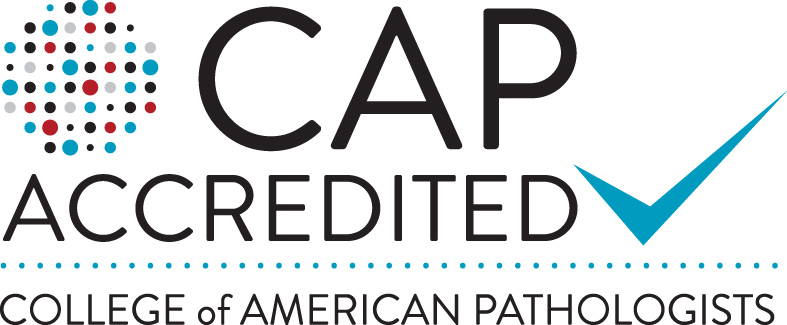Dr. Daryl Gohl of the University of Minnesota Genomics Center, former CSO and founder of CoreBiome and current senior advisor to Diversigen, throughout his career has developed best practices for microbiome sequencing. In August 2019, Dr. Gohl had the opportunity to present at the National Institute of Standards and Technology (NIST) on the subject of Improving Next-Generation Microbiome Sequencing Based Measurements.
Finding communities of microbes by sequencing the microbiome requires excellent accuracy and data quality to ensure the resulting analysis is without errors or bias. A few years ago, the Human Microbiome Project improved the accuracy of microbiome sequencing by creating sets of standard protocols; Dr. Gohl has helped make a number of improvements upon these achievements to further improve microbiome sequencing protocols. The first improvement he discussed at NIST was how reducing errors in 16s rRNA V4 amplicon sequencing rescued the drop out of C. Acnes in this kind of sequencing data.[1]
P.Acnes the Disappearing Microbe
Watch Dr. Gohl’s explanation here
The accuracy of a microbiome sequencing experiment is impacted by the biases and errors introduced throughout each step in the protocol. Mismatches between the C. Acnes, previously known as P.Acnes, V4 region and commonly used primer sets targeted to this region of the 16s rRNA gene caused an amplification error resulting in the disappearance of the entire C. Acnes taxa from the results.
Dr.Gohl and his lab were able to rescue the erroneous drop out of C. Acnes by using proof reading polymerases like Q5 or Kappa HiFi – exonucleases that minimize substitution error rates by correcting mismatch base additions during sequencing – and reducing the errors caused by primer mismatches. The rates of amplification of primers appeared to match the C. Acnes template DNA at similar percentages as was observed in the samples through other methods, suggesting that there is editing of the amplification primers by these proofreading polymerases.[1]
This suggested many issues with early amplicon sequencing experiments and led to questions like:
- Which polymerase to use?
- How many PCR cycles?
- What template concentration?
- Single or multi step PCR?
- Standard of custom sequencing primers?
- Which variable region?
Dr. Gohl answered many of these questions to establish the protocols for microbiome sequencing at Diversigen.
Best Practice for Benchmark – Low Bias Amplicon Sequencing
Watch Dr. Gohl’s explanation here
Optimization of microbiome experiments allows for maximum accuracy. Dr. Gohl has established a set of best practices for generating amplicon based microbiome data; with his help, Diversigen has applied these best practises to create Benchmark™ – an optimized and low-bias approach to amplicon sequencing for microbiome profiling.
Summarized in the table below are some of the conditions Dr. Gohl helped optimize to improve the accuracy of amplicon sequencing.
Condition | Optimization | Type of Accuracy Improved |
PCR Cycle | Minimize PCR cycle to lowest necessary rounds to reduce error amplification | Quantitative Accuracy |
DNA Template Concentration | Optimal concentration of DNA | Quantitative Accuracy |
Polymerase Choice | Highly processive polymerase | Quantitative Accuracy |
Proof reading polymers to edit primer mismatch additions | Qualitative Accuracy | |
Primer Choice | Minimize sequencing and amplification primer overlap to minimize base mismatch errors | Qualitative Accuracy |
Optimizing the protocol is only the first of many improvements he made to Next-Generation Sequencing (NGS). Dr. Gohl has gone on to develop tools to monitor the reproducibility of an experiment in the form of synthetic standards and a quantification method of PCR cycles to monitor size bias.
Standardizing Biophysical Space for Run-to-Run Reproducibility
Watch Dr. Gohl’s explanation here
During polymerase chain reaction cycles, amplification biases can occur due to the biophysical properties of the molecules within microbiome samples. Non-naturally occurring synthetic molecules can fill the space around amplification reagents and cause errors and bias between experimental runs. By tiling this space with synthetic molecules, the biases and errors are monitored run-to-run allowing for excellent quality assurance and reproducibility.
REcount – Restriction Enzyme Enabled Counting – Sequencing Standards for Size Bias
Watch Dr. Gohl’s explanation here
Engineered constructs, such as plasmids or transposons, require quantification for NGS. Typically, these measurements are taken by PCR followed by NGS, yet, PCR amplification can introduce significant quantitative errors. Dr. Gohl created Recount – Restriction Enzyme Enabled Counting – as a novel PCR free way to quantify engineered constructs.[2] Using Recount-based size standards, Dr. Gohl, was able to measure size bias in Illumina sequencing. Measuring size bias allows for normalizing the size of a construct, thus reducing size bias when sequencing.
Utilizing high quality reference materials like the Human Microbiome Project and synthetic standards Dr. Daryl Gohl has helped optimize protocols and produce higher quality microbiome data at the University of Minnesota Genomics Center and Diversigen. These best practices of sequencing protocols, combined with synthetic standards are used to monitor and track bias, optimize protocols, and act as quality assurances. By combining these best practices with the expertise of our Scientists, who collectively have over 300 publications in the microbiome space, Diversigen offers best in class microbiome sequencing and analysis services.
Interested in learning more about Diversigen’s sequencing services? Please contact Diversigen at info@diversigen.com


